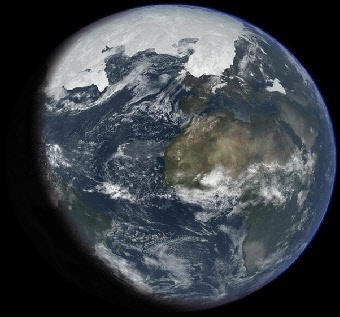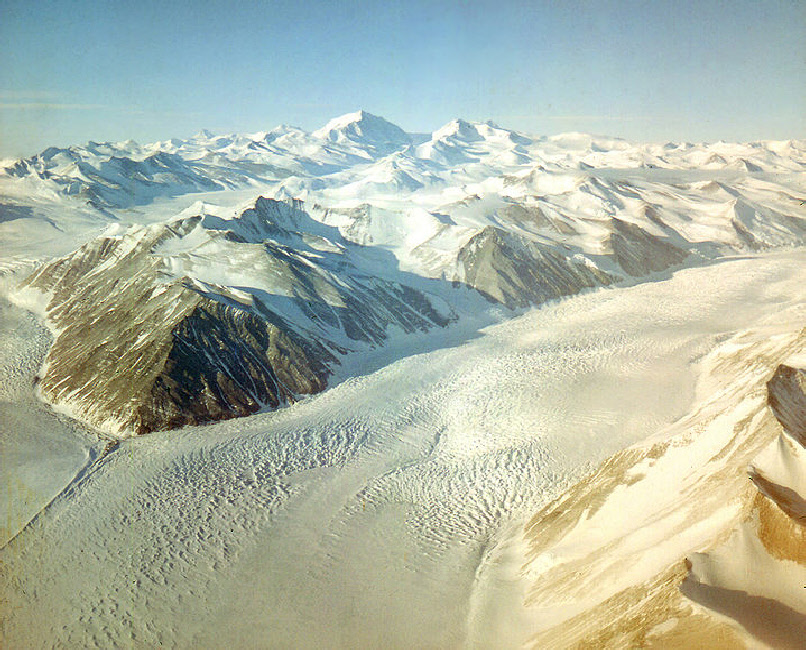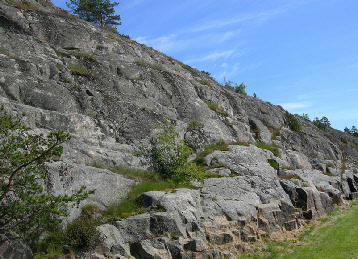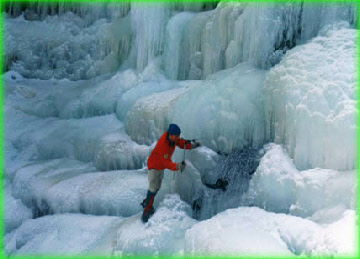
The Ice Ages
Since the earliest rocks around Abercrave ( Abercraf ) were formed over half a billion years ago, the Earth's climate has fluctuated between long warm periods when the World was free of ice, and cold ice ages when the ice extended from the poles into what we now know as temperate regions. These ice ages occurred around every 200 million years and lasted for tens of millions of years. During an ice age glaciers advance and retreat a number of times, and although we are presently in an ice age we are in a warmer interval between periods of advanced glaciation.
Twenty such periods of advanced glaciation have already occurred in this present ice age and the last one which was at its most severe twenty thousand years ago is often referred to as the last ice age. An indication of how the Earth would have looked from space at that time can be gained from the picture on the left.
At such times the ice from the Northern Polar Region extends far enough South to cover Wales and Britain, and the Abercrave region has been subjected to glaciation at different times in the past. The glaciers scour the land, changing the surface features so that they show the typical characteristics of a glaciated past.
The picture below left shows an exposed rock surface after a glacier has retreated leaving flow marks (scratches and gouges) which clearly show the direction of the glacier's movement. Huge boulders are often transported by glaciers which then retreat to leave them perhaps hundreds of miles from their place of origin. Some of the boulders and loose rocks around Abercrave are therefore likely to be from other places far to the North.
Land dwelling reptiles, dinosaurs and animals appeared well after the last local sedimentary rock formations of the late Carboniferous and Permian periods were formed. This means that their remains were probably never fossilised in the Abercrave area. Without doubt these creatures colonised the region, but in the few cases where their remains became buried in mud, sand, or peat the advancing glaciers of the more recent ice ages would have removed them.
The geology of the Abercrave area does however preserve a record of the Palaeozoic Era, from when life first appeared in the seas until the earliest mammal-like creatures began to colonise the land.
The Abercrave area today with its temperate climate, lush green valleys, rivers, waterfalls, lakes, caves and mountains owes the variety of its scenery and natural features to its dynamic geological past.




The rocks pictured above show the lines and grooves caused by the flow of some previous glacial action.
Beardmore Glacier in Antarctica (above) shows how Northern Europe would have looked during the ice ages.

A recent winter scene at Henrhyd Falls, Coelbren